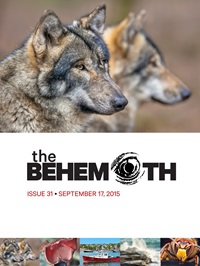Wonder on the Web
Wonder on the Web Issue 31: Links to amazing stuff. /
‘Wasp Venom Selectively Assassinates Cancer Cells’
That headline really speaks for itself, but read Discover’s article for the science behind this phenomenon, as well as how doctors may harness the active molecule, MP1, for future treatments. While you’re at it, listen to (or read, if you must) one woman’s story of the unexpected healing she found in bee venom.
Art for the Bible’s Sake
You’re probably familiar with the ancient tradition of illuminating Scripture with art. While it was once practiced with illustrations in the margins of a Bible, a troupe in New York City is contemporizing the idea. Spark and Echo Arts has an ambitious goal: creating or commissioning a work of art, music, theatre, poetry, dance, or film in response to every passage of the Bible. We love the reasoning they give for their project: “because we love the Bible and how it has shaped our creative lives.”
With a new work premiered online every Monday, they say it’ll take 20 years to cover the 31,103 verses in the Bible. They’ve been at it since 2010 (read CT’s 2013 report here), but as their collection grows, it becomes an increasingly invaluable source for inspiration—when grappling with a text, writing a sermon, or even just enriching one’s devotional life.
The Joy of Ordinary Things
Speaking of loving the Bible and how it shapes our lives, CT’s Re-Word project invites Christian teachers and scholars to write about passages meaningful to their faith and life. In the latest installment, J. I. Packer writes about how Ecclesiastes taught him to curb his cynicism with gospel-fueled joy: “Being too proud to enjoy the enjoyable is a very ugly shortcoming, and one that calls for immediate correction. Let it be acknowledged that, as I had to learn long ago, discovering how under God ordinary things can bring joy is the cure for cynicism.”
Poetry: Language Under Pressure
We were several issues into The Behemoth before we decided to include poetry in our editorial grid. But we soon realized that what we were trying to do—to give our readers space to behold something vast, to prompt more than to inform, to evoke a sense of awe and wonder—is more often skillfully executed by poets than by science writers, historians, and theologians. Props to reader and poet Julie Sumner (who is now our poetry editor) for suggesting it to us in the first place.
Lauren F. Winner (who, if you missed it, was in our last issue) wrote an essay for Books & Culture about why she reads poetry: “Reading a poem is like watching language do what a body does when it spins a triple pirouette.”
On that note, if you ever have feedback about what’s included in The Behemoth—if you love or hate having the poem each issue, if an essay strikes you a certain way—write us. We’re eager to please.
Also in this Issue
Issue 31 / September 17, 2015- Editor's Note from September 16, 2015
Issue 31: Yellowstone’s wolves, the strangest plant, and an even more beautiful creation. /
- Yes, Wolves Change Rivers. And So Much More.
The changes at Yellowstone aren’t just an elegant recipe for ecological balance. /
- The Strangest Plant in the World
I’m one of the few botanists studying Hydnora triceps. Here’s why I dig it. /
- An Earth More Beautiful than Beautiful
What will this stuff look like, I wonder, when God restores it? /
- The Thread of Life
‘Aloof, aloof, we stand aloof’ /


